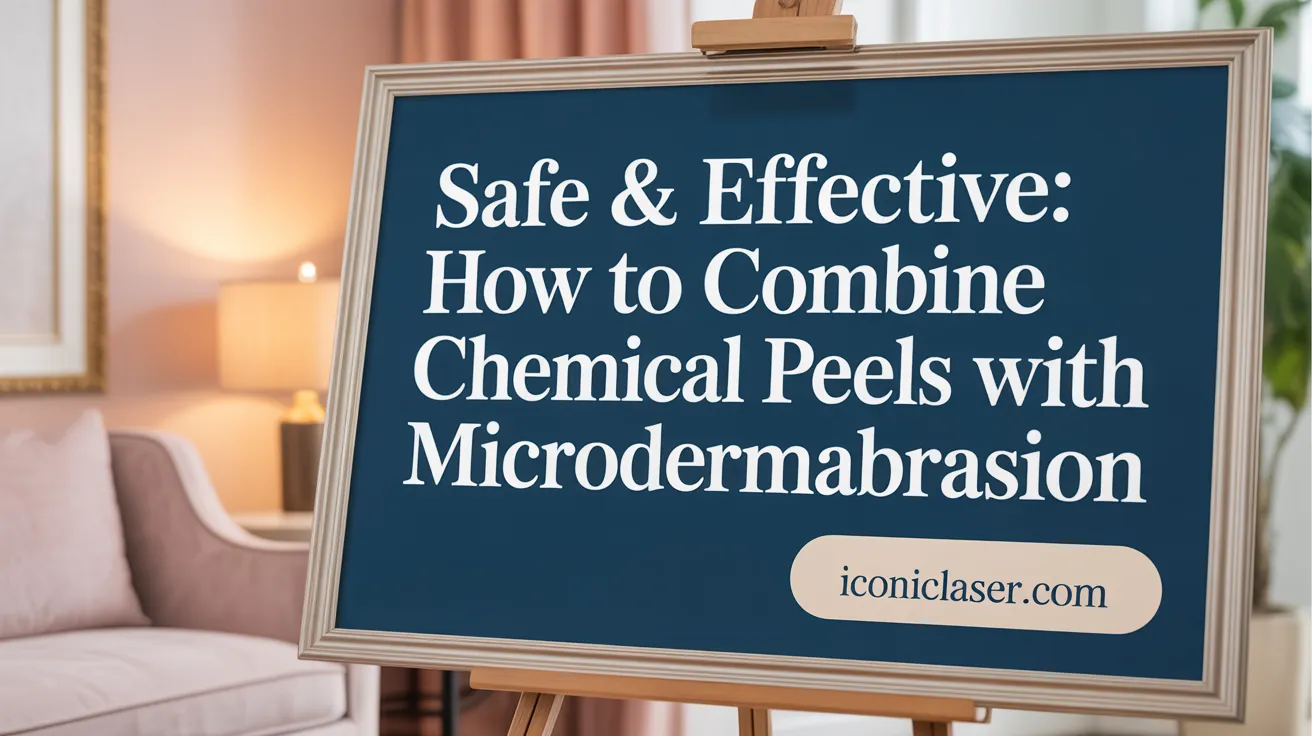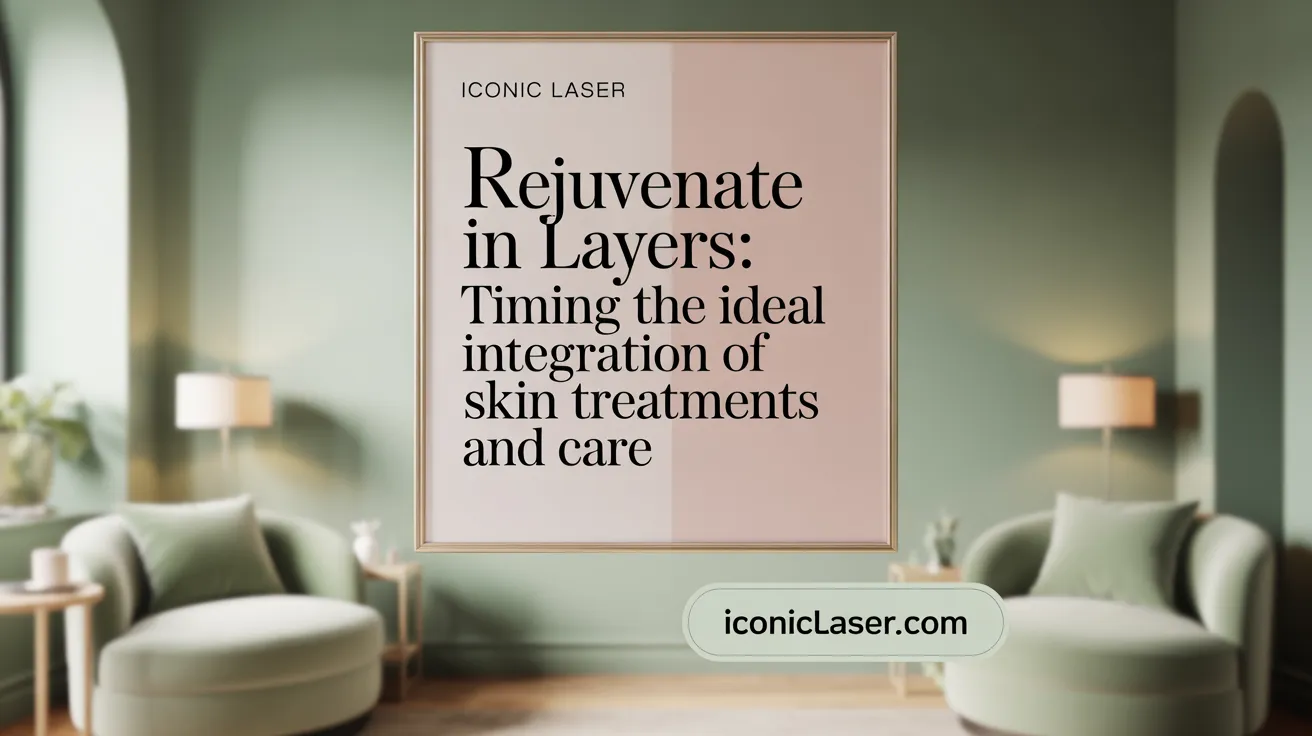Unlocking Enhanced Skin Health through Treatment Synergy
Chemical peels have long been a cornerstone of aesthetic dermatology, renowned for their ability to exfoliate and rejuvenate skin. Recent advances in skin therapy integration have revealed that when chemical peels are thoughtfully combined with complementary treatments—such as microneedling, LED light therapy, and injectables—their efficacy and benefits are significantly amplified. This article explores the science, methods, safety considerations, and best practices of blending chemical peels with other skin therapies to provide a holistic, optimized approach to skin rejuvenation and health.
Effective Combinations: Treatments That Enhance Chemical Peel Outcomes

What treatments can be combined with chemical peels to enhance skin rejuvenation?
Combining chemical peels with other skin treatments can lead to more dramatic and lasting improvements. Among the most popular options are microneedling, LED light therapy, hydrating facials, and microdermabrasion.
Microneedling, often performed before or after a chemical peel, stimulates collagen production deeper within the skin. This process can significantly improve the appearance of scars, fine lines, and skin texture, maximizing the rejuvenating effects of the peel.
LED light therapy is particularly beneficial when used after a peel. Different wavelengths target specific skin concerns: blue light reduces bacteria and acne, red light stimulates collagen production and decreases inflammation, while amber light can help soothe redness. Post-peel LED therapy accelerates healing, minimizes redness, and enhances skin firmness.
Hydrating facials are another complimentary treatment, helping to restore essential moisture levels essential for healing. They soothe irritated skin, reduce dryness, and create a luminous complexion, improving the overall outcome of the peel.
Microdermabrasion can be safely combined with chemical peels to gently remove superficial skin layers and pigmentation, further smoothening skin surface and enhancing the peel’s efficacy. However, timing is crucial, and these procedures are usually scheduled at least a week apart to prevent overstressing the skin.
Pre-treatment consultations with skincare professionals are vital to develop a personalized plan. These experts assess skin type and concerns to recommend suitable treatment combinations and appropriate timing, ensuring safety and optimal results. When carefully planned, such multi-modality approaches can significantly rejuvenate skin, addressing issues like aging, scars, and discoloration more effectively.
Combining Chemical Peels with Microdermabrasion: Safety and Protocols

Can chemical peels be safely combined with microdermabrasion?
Yes, chemical peels can be safely combined with microdermabrasion when performed under professional supervision. This combination leverages the exfoliating power of both treatments to enhance skin renewal.
Microdermabrasion works by gently removing the outermost layer of dead skin cells, which can prepare the skin for a more effective chemical peel. When these treatments are used together, they can boost overall skin texture, fade scars, and improve skin brightness.
However, since both procedures involve skin exfoliation, there is a risk of over-irritation or inflammation if not properly managed. To minimize this, professionals typically schedule treatments on different days or set appropriate intervals between sessions, generally ranging from one to two weeks.
Patients with sensitive skin, active skin infections, or certain skin conditions should seek expert advice before combining these treatments. A thorough skin assessment ensures that the combination is suitable for individual skin types and concerns.
Post-treatment care plays a vital role in safety and results. Using sun protection, hydrating serums, and gentle skin care products can reduce irritation and support healing.
In summary, with careful planning, proper timing, and professional guidance, combining chemical peels with microdermabrasion can be a safe and effective strategy to achieve smoother, healthier skin.
LED and Red Light Therapy: Complementing Chemical Peels for Optimal Healing

How does LED therapy work after a chemical peel?
After a chemical peel, especially superficial or medium-depth treatments, LED light therapy can be an effective way to support healing. LED therapy uses specific wavelengths of light—such as blue, red, or amber—to stimulate cellular activity deep within the skin. When combined with peels, this light therapy enhances collagen production, reduces inflammation, and accelerates tissue repair.
Since chemical peels remove damaged outer layers, LED light therapy can penetrate more effectively, promoting deeper rejuvenation. This synergy results in smoother skin, improved texture, and a reduction in acne lesions or signs of aging.
Can LED therapy reduce redness and inflammation after a peel?
Absolutely. LED therapy, especially red and amber light, is renowned for its anti-inflammatory properties. It helps calm irritated skin, decrease redness, and alleviate swelling following a peel. By soothing the skin, LED therapy allows patients to experience less discomfort and promotes faster recovery.
This calming effect is particularly useful after medium and deep peels, where inflammation is more pronounced. Regular sessions can lead to a notable reduction in the visible signs of irritation and support a more even skin tone.
When should LED therapy be started after a chemical peel?
Timing depends largely on the depth of the peel performed:
- Superficial peels: LED therapy can often begin as early as 12–24 hours after the procedure, provided the skin has been properly neutralized and shows minimal redness.
- Medium-depth peels: It is recommended to wait 2–3 days, until initial redness and sensitivity decrease, before initiating LED sessions.
- Deep peels: Waiting at least one week or until complete healing is essential. Always follow your dermatologist’s advice for timing.
Starting with sessions of low intensity—about 5 minutes per treatment—is advisable to evaluate skin response. Gradually, the duration can be increased as tolerated.
Should patients start with low-intensity LED sessions?
Yes, beginning with low-intensity, shorter sessions is safest, especially immediately after a peel. This approach minimizes the risk of irritation or excessive heat buildup. Monitoring how your skin responds allows for adjustments to session length and intensity.
A gradual increase helps ensure a comfortable experience and prevents overstimulation, which could compromise healing.
How to monitor skin response and ensure safe combination?
Regularly assess your skin during treatment. Look out for signs of excessive redness, swelling, warmth, or discomfort. If these occur, discontinue LED sessions temporarily and consult your skincare provider.
Professional guidance is crucial. A trained dermatologist or aesthetician can tailor the timing, wavelength, and duration to your specific skin type and the depth of the peel. This personalized approach enhances safety, maximizes benefits, and reduces the risk of adverse reactions.
Integrating Dermal Fillers and Neuromodulators with Chemical Peels: Timing and Benefits

When should treatments like dermal fillers or neuromodulators be scheduled in relation to chemical peels?
The timing of complementary skin treatments such as fillers and Botox after a chemical peel depends on the depth of the peel and how quickly your skin heals.
For superficial peels, which typically involve minimal downtime, treatments like fillers can usually be scheduled within a few days to a week afterward. These peels cause mild redness and minor sensitivity, making early touch-ups possible once the skin has calmed down.
Medium-depth peels require a longer waiting period. It is generally recommended to wait at least two to four weeks before administering fillers or Botox. This allows the skin to recover from the peel, reducing the risk of inflammation or uneven results.
Deep chemical peels, which penetrate farther into the skin layers, necessitate even longer intervals—often several weeks—to ensure complete healing and tissue recovery. Repeated deep peels are discouraged in quick succession, and similar spacing applies when planning injectable treatments.
It’s essential to avoid scheduling fillers immediately after a peel if the skin remains inflamed or sensitive, as this can increase the risk of complications such as swelling or uneven filler placement.
How can combined treatments enhance skin rejuvenation?
When timed correctly, combining chemical peels with dermal fillers and neuromodulators can significantly enhance anti-aging results. Peels help improve surface texture and tone, while fillers restore volume, and Botox reduces dynamic wrinkles.
This multi-layered approach addresses both surface imperfections and deeper signs of aging, providing more comprehensive rejuvenation.
Why is a professional consultation vital?
Every individual’s skin reacts differently. A qualified dermatologist or aesthetician will assess your skin type, treatment history, and specific concerns to determine the safest timing for each procedure.
Proper planning minimizes risks like excessive inflammation, delayed healing, or uneven results.
How to avoid inflammation and ensure proper healing?
Spacing treatments by at least one to two weeks allows the skin to heal properly. During this period, avoid sun exposure, harsh skincare products, and aggressive treatments.
Following your provider's recommendations, using soothing products, and maintaining hydration can support optimal recovery.
By coordinating treatment schedules carefully, you can maximize results while maintaining healthy, resilient skin.
Guidelines for Safely Blending Chemical Peels into Comprehensive Skincare Regimens
What are the best practices and guidelines for integrating chemical peels into comprehensive skincare or aesthetic treatment plans?
Successfully incorporating chemical peels into a broader skincare routine involves several important steps to ensure safety and effectiveness.
First, a thorough assessment of the patient’s skin type and condition is essential. This often includes classifying skin according to systems like Fitzpatrick or Glogau, which helps determine suitable treatments and peel depths.
Next, proper preparation is crucial. Patients may need priming with agents such as retinoids, hydroquinone, or gentle exfoliants in the weeks prior to the peel. Emphasizing sun protection before and after treatment minimizes the risk of pigmentation issues.
Choosing the right peel depends on individual goals and skin sensitivity. Superficial peels are suitable for fine lines and uneven tone, while medium or deep peels target more severe skin concerns. The treatment should always be performed by trained professionals who understand the nuances of peel application and skin handling.
Integrating chemical peels with other treatments like microneedling, LED light therapy, or facials can boost results. Proper scheduling—spacing treatments by 1 to 2 weeks or more—helps reduce irritation and allows the skin to recover.
Post-treatment care includes continued sun avoidance, gentle skincare, and moisturizing. Monitoring the skin’s response is necessary; any signs of abnormal reactions should prompt consultation or treatment adjustment.
Adhering to these guidelines ensures that chemical peels enhance skin health without overburdening or damaging the skin, leading to more sustainable and satisfying results.
The Science Behind Blended Chemical Peels: Ingredients, Antioxidants, and Techniques
What scientific principles, ingredients, and techniques are involved in blended chemical peel treatments, including combinations with antioxidants like glutathione?
Blended chemical peel treatments are designed to optimize skin renewal by combining various acids, antioxidants, and specialized techniques.
Most formulations incorporate a mix of acids such as alpha-hydroxy acids (AHAs) like glycolic and lactic acid, beta-hydroxy acids (BHAs) like salicylic acid, and sometimes trichloroacetic acid (TCA) or phenol. These agents work together to exfoliate dead skin layers, stimulate collagen production, and improve skin texture and tone.
In addition to acids, active ingredients like retinoic acid, kojic acid, and azelaic acid are often used. Kojic acid, for example, inhibits tyrosinase, an enzyme involved in melanin synthesis, thus reducing hyperpigmentation.
Antioxidants like glutathione and vitamin C are integral to blended peels. Glutathione is a powerful tripeptide antioxidant that detoxifies free radicals, lightens dark spots, and enhances skin brightness. Vitamin C reinforces these effects by promoting collagen synthesis, neutralizing oxidative stress, and further inhibiting melanin production.
The use of precise sequencing and concentration of acids ensures effective penetration without over-irritating the skin. Techniques such as microneedling can be employed to create microchannels, which enhance ingredient diffusion and synergize the chemical exfoliation process.
Enzymatic inhibitors, such as kojic acid, work by blocking enzymatic pathways involved in pigmentation, providing a dual mechanism when combined with antioxidants.
By leveraging these biological and chemical mechanisms, blended peels achieve deeper skin rejuvenation, improved pigmentation, and increased elasticity. Proper formulation, application, and timing are crucial for maximizing benefits and minimizing potential irritation or adverse effects.
Emerging formulations also focus on incorporating melanogenesis inhibitors and anti-inflammatory agents, emphasizing the importance of a well-balanced, scientifically supported approach for skin lightening and renewal.
Whole treatment strategies are built upon scientific principles that combine biochemical reactions, enzymatic inhibition, and technical advancements to support natural skin healing, regeneration, and a brighter complexion.
Achieving Optimal Skin Rejuvenation through Intelligent Treatment Integration
Blending chemical peels with other skin therapies unlocks a new dimension in aesthetic skincare, enabling targeted, multi-layered rejuvenation customized to individual needs. By understanding the complementary mechanisms of treatments like microneedling, LED therapy, injectables, and hydrational facials, along with the scientific foundation of blended peel formulations, patients and practitioners can achieve safer, more effective, and longer-lasting results. Critical to success are proper patient assessment, professional guidance, treatment sequencing, and adherence to safety protocols, ensuring skin health is enhanced without compromise. Through these thoughtfully integrated strategies, chemical peels evolve from a standalone procedure to a powerful component within comprehensive skin wellness regimens.
References
- Skin Health: Combining Chemical Peels with Other Treatments
- Combining Chemical Peels with Other Skin Treatments - Facelogic
- Can You Combine Chemical Peels With Other Treatments?
- Mixing Different Treatments | Peels + Needling + IPL + Lasers + ...
- Combining Chemical Peels with Other Treatments | RxWellness
- Maximize Your Glow: Chemical Peels & Skincare Treatments
- Combining Microneedling with Other Skin Treatments
- Can Microneedling Be Combined With Other Skin Treatments Such ...
- Can You Combine Chemical Peels with Other Treatments? What to ...
